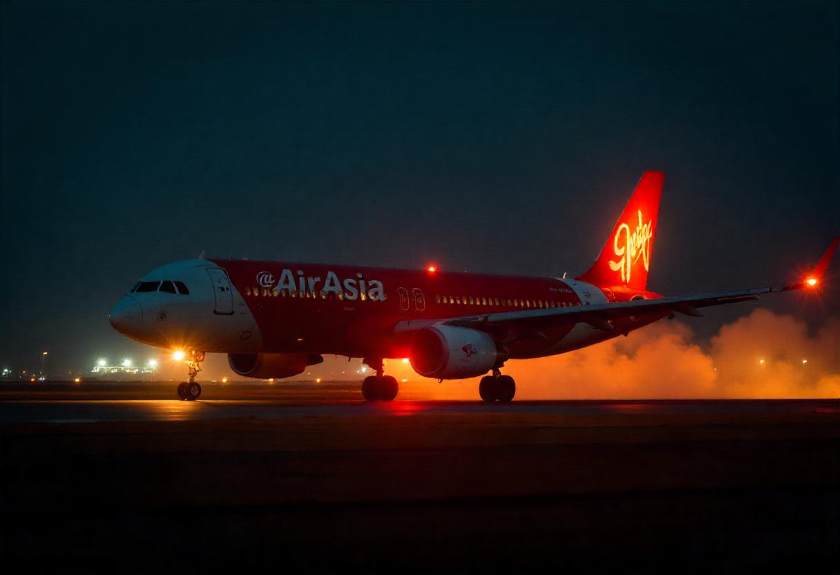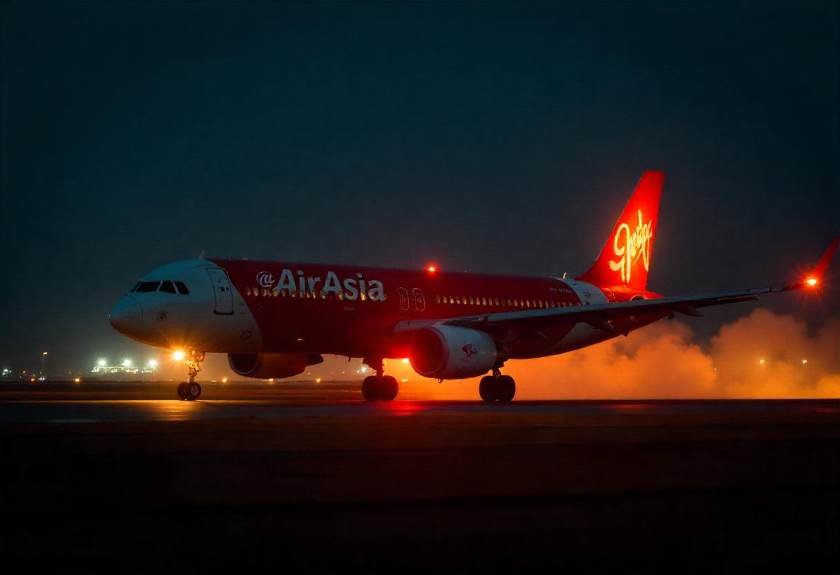Saturday, July 5, 2025

In a transformative announcement at the Paris Air Show, AirAsia Berhad—a subsidiary of Capital A—signed a groundbreaking Memorandum of Understanding (MoU) with Airbus. This high-impact deal, valued at approximately USD 12.25 billion, covers 50 A321XLR aircraft with options for an additional 20 jets. The agreement, witnessed by Prime Minister Anwar Ibrahim and Airbus CEO Christian Scherer, signifies AirAsia’s ambitious move to become the world’s first low-cost narrow-body network carrier, poised to link Malaysia, ASEAN, Europe, the Middle East, Central Asia, and North America.
Expanding Global Horizons
AirAsia’s expansion plan is set to stretch far beyond its ASEAN base. With the A321XLR’s long-range capabilities—up to 4,700 nautical miles—the airline is opening new routes that connect Southeast Asia with Europe, the Middle East, Central Asia, and North America. These next-generation jets will allow AirAsia to offer non-stop and one-stop flights to previously inaccessible markets, revolutionizing the way low-cost carriers approach long-haul travel.
The aircraft will start arriving in 2028, continuing through 2032, and will complement AirAsia’s existing fleet of A320 Family and A330 wide-body aircraft. This diverse fleet will enable AirAsia to match capacity with demand, providing flexibility for both regional and intercontinental routes.
Fuel Efficiency and Cost Management
The A321XLR is built for efficiency, with an estimated 20% reduction in fuel burn per seat compared to the A321neo. This improved fuel economy supports AirAsia’s commitment to cost management, environmental sustainability, and operational profitability. By deploying these efficient aircraft on long-haul routes, the airline plans to keep fares low while also maintaining a commitment to reducing its carbon footprint.
Restructuring and Financial Recovery
The timing of this order is crucial for AirAsia, which has been recovering from the financial impact of the COVID-19 pandemic. In 2022, the airline’s parent company, Capital A, was classified under Malaysia’s financial distress guidelines. In response, AirAsia has been working on a restructuring plan that consolidates operations and prepares the company for a return to profitability.
In addition to the fleet expansion, AirAsia is pursuing a strategy to exit this distressed status by mid-2025, supported by a series of planned investments and financial restructuring. The airline is also preparing to issue its first corporate bond in October to further strengthen its finances.
Strengthening Regional and Global Connectivity
AirAsia’s new A321XLRs will not only connect more destinations within ASEAN but also expand its reach to secondary cities and underserved markets in Europe, the Middle East, and Central Asia. These new routes will offer travelers affordable long-haul options that were previously out of reach for budget-conscious passengers.
The airline’s multi-hub strategy is key to its plan, with Kuala Lumpur International Airport (KLIA) serving as a primary base for these expanded international flights. KLIA itself is undergoing significant growth, with expansion projects aimed at increasing capacity to handle rising passenger traffic. This aligns perfectly with AirAsia’s goal of becoming a key player in the international aviation market.
Government Support and Strategic Alliances
Prime Minister Anwar Ibrahim has emphasized that AirAsia’s Airbus deal will enhance Malaysia’s position as a leading aviation hub in Asia-Pacific. The Malaysian government has been supportive of the airline’s expansion and restructuring efforts, viewing this deal as a step forward in the nation’s broader transport and tourism development strategies.
In addition to its partnership with Airbus, AirAsia’s expansion is part of a wider economic initiative. Malaysia is working with other countries to strengthen trade and tourism ties, further supporting the airline’s growth. This collaboration also extends to infrastructure development, with the government investing in transport facilities to accommodate the increasing demand for air travel.
Boosting Tourism and Economic Growth
AirAsia’s fleet expansion will undoubtedly have a positive impact on tourism and the wider economy. By offering more affordable flights to international destinations, the airline will help drive both inbound and outbound tourism. This is particularly significant for Malaysia, as the country seeks to boost its tourism industry and attract visitors from key markets in Europe, Asia, and beyond.
As AirAsia extends its reach to new international markets, it will not only make travel more accessible but also foster greater cultural exchange and economic cooperation between Southeast Asia and the rest of the world.
Mixed Fleet Strategy for Market Adaptation
Alongside the A321XLRs, AirAsia plans to introduce additional aircraft to serve smaller regional markets, such as the Airbus A220 or Embraer E2. This mixed fleet strategy allows the airline to adapt to market demands, offering more flexible options for both short and long-haul routes. The combination of narrow-body and wide-body jets will also improve overall fleet utilization, reducing costs while maximizing efficiency.
Environmental Commitment
The A321XLR’s advanced technology promises significant reductions in fuel consumption and emissions. As part of AirAsia’s broader commitment to sustainability, these new aircraft will play a key role in reducing the airline’s environmental footprint while maintaining its low-cost business model. With the aviation industry under increasing pressure to address climate change, AirAsia’s focus on fuel-efficient aircraft aligns with global efforts to make air travel more sustainable.
AirAsia’s Long-Term Vision
By 2030, AirAsia aims to carry 150 million passengers annually, a significant increase from its current figures. The expansion of its fleet, combined with the airline’s commitment to connecting more cities with affordable flights, is expected to make a substantial impact on global travel. With these new routes and aircraft, AirAsia is positioning itself as a global leader in affordable long-haul travel, offering passengers low-cost options without sacrificing quality or convenience.
Conclusion
AirAsia’s investment in 70 A321XLR aircraft marks a major step forward in the evolution of low-cost aviation. With the ability to connect Malaysia, ASEAN, Europe, the Middle East, Central Asia, and North America, AirAsia is set to revolutionize global air travel. Supported by government policies, a strong multi-hub strategy, and an expanding fleet, the airline’s long-haul ambitions are within reach, bringing new opportunities for travelers and businesses alike. As the aviation industry continues to recover, AirAsia is positioning itself at the forefront of a more connected, sustainable, and cost-effective future for global air travel.
«Enjoyed this post? Never miss out on future posts by following us»

